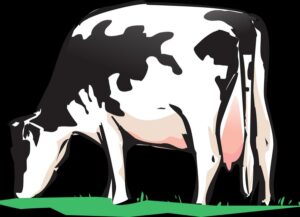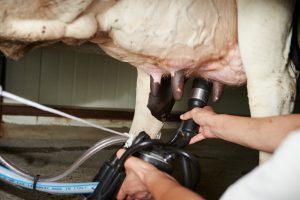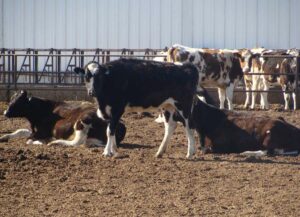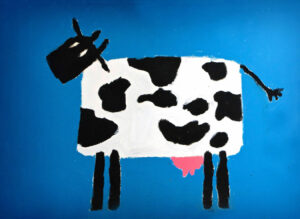Alvaro Garcia
According to past research up to 70% of lactating dairy cows develop metabolic and/or infectious diseases during the early post calving period, regardless of production, breed or management. One area of concern has been the negative association between the incidence of health disorders around calving and reproductive performance.
Reduced pregnancy rates on day 65 post insemination has been associated with high serum non-esterified fatty acids (NEFA) concentrations, calving problems, metritis, endometritis and digestive problems. A recent article published in the journal Theriogenology reported the association observed between post calving health disorders, reproductive responses, and pregnancy status in lactating Holstein cows.
The researchers grouped the cows before the trial in 70 healthy and 60 sick based on postpartum health records and serum metabolites. Within the sick group, 35 had metabolic problems, 15 had infections, and 10 had both.
Blood collected on days 7 and 14 post calving was used to test for serum concentrations of NEFA, β-hydroxybutyrate (BHB), and aspartate aminotransferase (AST). Then also collected on days 0, 8, 16, 18 and 20 post timed insemination to determine concentrations of progesterone, on days 16, 18 and 20 to test for prostaglandin F metabolite (PGFM), and on day 16 for interferon-stimulated gene-15 (ISG15) relative mRNA expression.
At 30 days post calving, the researchers measured cyclicity through trans-rectal ultrasonography. Those cows with a visible corpus luteum received a GnRH-based time insemination protocol in order to classify them as cyclic. Pregnancy status prediction was on day 16 post insemination using ISG15 mRNA gene expression relative to β-actin; after that, they diagnosed pregnancy by trans-rectal ultrasonography at days 32 and 60 post insemination.
Cows that were healthy and pregnant had the greatest expression of ISG15. Reduced concentrations of serum progesterone post insemination were associated with health disorders post calving. This differed at insemination since sick cows had greater serum progesterone concentrations compared with healthy cows (0.65, 0.86 and 0.75 ng/mL for cows with metabolic, infections, and both problems, respectively vs. 0.24 ng/mL in healthy cows).
Healthy cows had lower serum concentrations of PGFM after insemination, regardless if they were pregnant or open. Sick cows were less likely to become pregnant both on day 16 (ISG15 mRNA expression prediction), and on days 32 and 60 after insemination (ultrasonography). In addition, sick cows had also greater chances to lose their pregnancy both from day 16 to 32, and 16 to 60 post insemination, regardless of the type of health disorder observed.
The results of this experiment demonstrated sick cows have reduced reproductive efficiency, reflected by a reduction in embryo survival and maintenance of a pregnancy regardless of the type of health disorder.
References
Mohtashamipour, E. Dirandeh, Z. Ansari-pirsaraei, M.G. Colazo. 2020. Postpartum health disorders in lactating dairy cows and its associations with reproductive responses and pregnancy status after first timed-AI. Theriogenology. 141: 98-104.
© 2019 Dairy Knowledge Center, LLC. All Rights Reserved.











